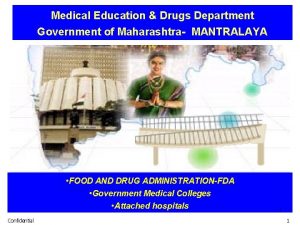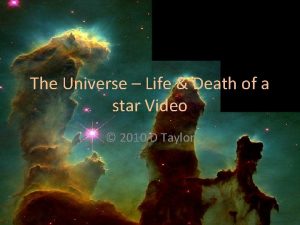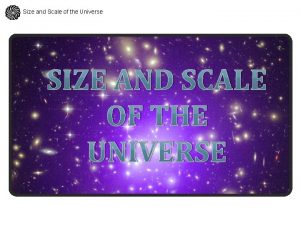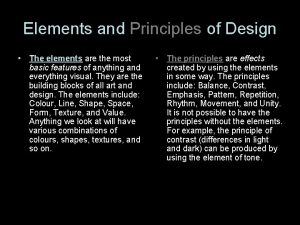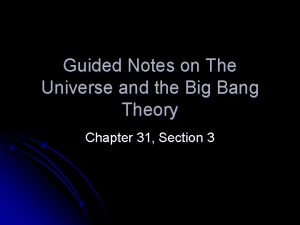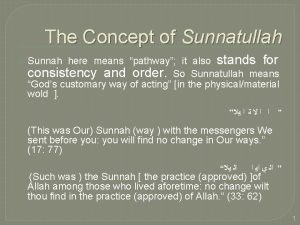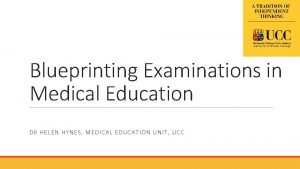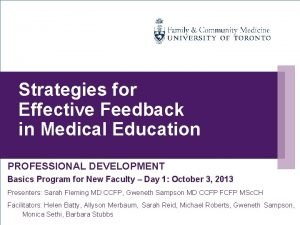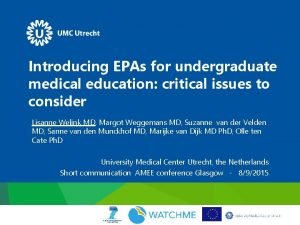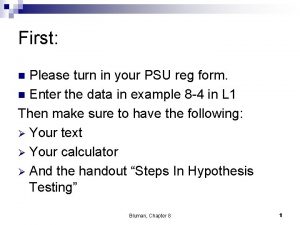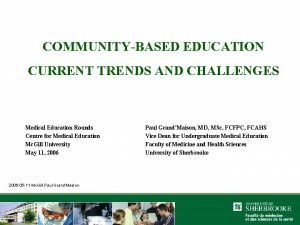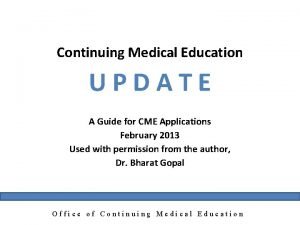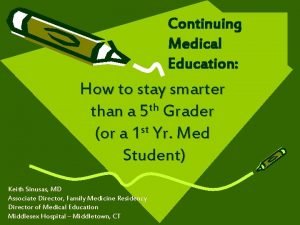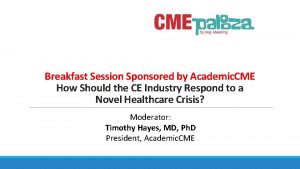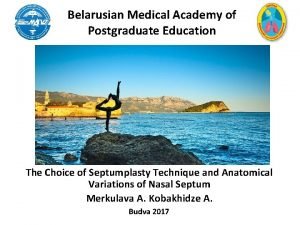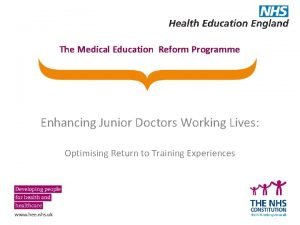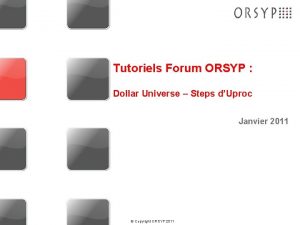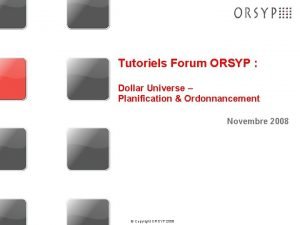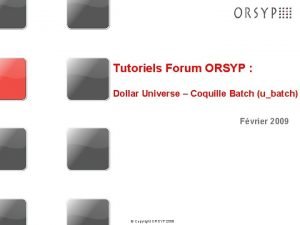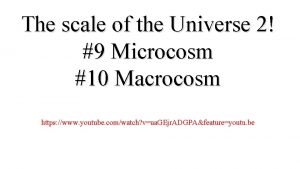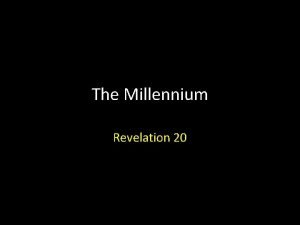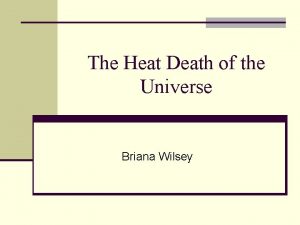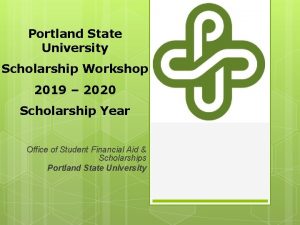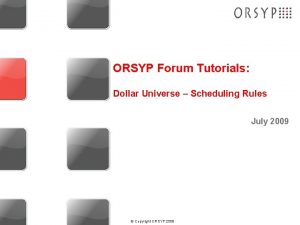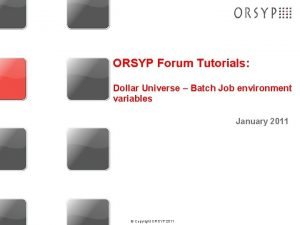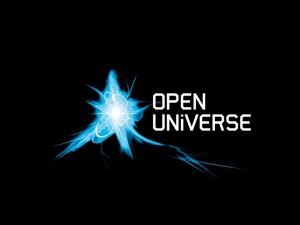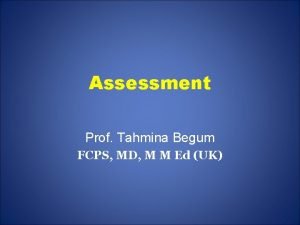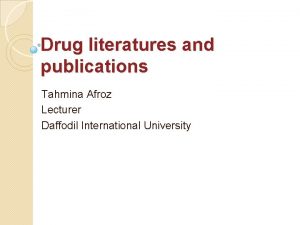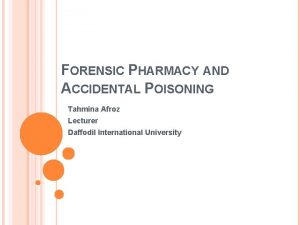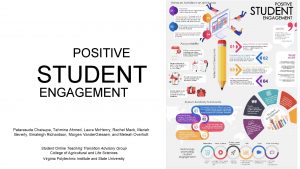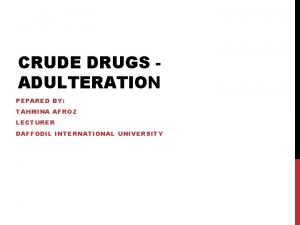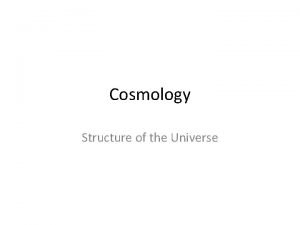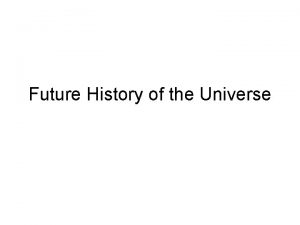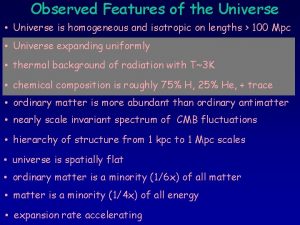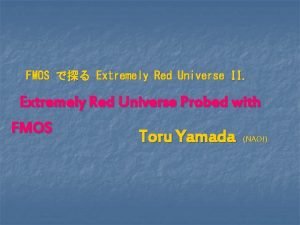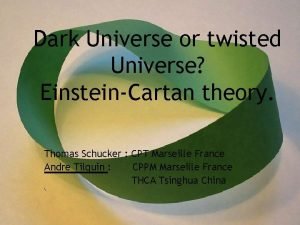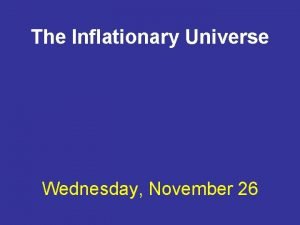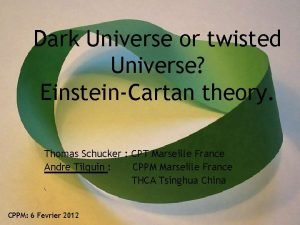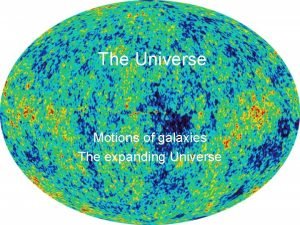Universe MEDICAL EDUCATION What and Why Prof Tahmina












































- Slides: 44

Universe

MEDICAL EDUCATION What and Why? Prof. Tahmina Begum FCPS, MD, MMEd


Objectives � � What is Medical Education Why do we need Medical Education History of Medical Education Major Areas of Medical Education

Education - Is what survives when what has been learned has been forgotten- Skimmer

Medical Education … Not only to provide students with knowledge …. But to teach and train on skills ---and to motivate students with attitude and outlook of a medical professional

Aim of Medical Education To produce doctors with � wide range of skills � Relevant knowledge � Appropriate attitudes to meet the demand of the society & profession

Teachers are not teachers …. . and assessors too!

Teacher � � Have a profound responsibility to convey the art & science of current medical practice Must be aware of the principles of teaching –learning and assessment

“Teaching is helping someone to learn something”

Teachers are born, they are not made? Teachers are not born, they are made! ? ?



Facilitator Change of behaviors Learner


Theory

Medical education must respond to --� � � Teach scientific facts & behavior Promote the use of information technology Adopt the changing doctor patient relationship Help future doctors to shape & adopt the change Promote multi-professional team working & care Reflect the changing pattern of disease & health care delivery

HISTORY OF MEDICAL EDUCATION Few Landmarks

The Flexner Report What was done? � In 1908, the Carnegie Foundation for the Advancement of Education in the United States authorised a study and report on the schools � of medicine in the United States. Abraham Flexner (a high school principal) was requested to conduct the study under the direction of the Foundation.

The Flexner Report What was done? � Flexner visited � all medical schools in North America, � a total of 150 undergraduate and 12 postgraduate schools in the US and 8 undergraduate schools in Canada. His report was published in 1910

The Flexner Report � � � What Flexner reported Too much theory Too much class Little interaction Only observation Less chance of participation

The Flexner Report � � � How things changed. The impact of the report and the sustained changes it produced are remarkable. It succeeded in establishing a single model of medical education that continues to the present day.

To cope with these changes Educational institutions need � to make their curricula more meaningful and relevant to the needs of the time � to produce doctors oriented to the real needs of the community.

The Edinburgh Declaration (1988) Actions within the medical school 1. Widen educational settings 2. National health needs as the context for curricula 3. Active learning methods (tutorial, self-directed and independent) for continuity of learning throughout life 4. Require professional competence (not mere knowledge recall) 5. Train medical teachers as educators 6. Prevention of illness and health promotion 7. Integration of science and clinical practice 8. Selection of applicants, for non-intellectual as well as intellectual

"Tomorrow's Doctors" of General Medical Council (GMC) of UK

The Lancet 2010, Education of health professionals for the 21 st century: a global independent Commission It seeks to � advance health by recommending instructional and institutional innovations � develop a new generation of health professionals who will be better equipped to address present and future health challenges


Major Areas of Medical Education Curriculum Educational Strategies Evaluation of Teachers and program Teaching – Learning Methods Media and Material Current Assessment Interest Faculty Development Research

5 Aspects of a curriculum Aims Learning Methods Content Organization of content Assessment

Domains Educational objectives are allocated to 3 domains Knowledge Attitude Skills

Teaching-Learning Cycle Planning Evaluating Assessing Teaching Learning

Current Interest

Current Interest Continuing professional development Communication Skill Staff development Microteaching Doctor Patient Relationship Comprehensive professional development for medical faculty Patient safety

COURSE DESIGN Four module Ø Each module has four units Ø

Contemporary issues in medical education � � Curriculum development Educational objectives and competencies Principle of teaching- learning & teaching methods e-learning and continuing professional development (CPD)

Instructional design � � Principles of Instructional design and typography Power-point preparation and presentation Flipchart, boards and printed materials study guide and hand out

Teaching-learning � � Educational environment and staff development Interactive large group teaching Small group teaching and clinical teaching Other educational strategies- micro-teaching, distance learning, problem based learning (PBL), evidence based learning

Assessment � � Principles and methods of assessment and criteria of good assessment Written assessments- essay questions, Structured Essay Question (SEQ) Modified Essay Question (MEQ), Multiple Choice Questions (MCQ), Short Answer Question (SAQ) Performance based assessment –Objective Structured Clinical Examination (OSCE), Clinical examination (Long and short case), DOPS, Mini- CEX Structured Oral Examination (SOE), selfassessment and portfolio

METHODS OF TEACHING q Reading the supplied materials q Face to face

Assessment � � Formative (On line), feedback is given by the facilitators with Website. Assignment for each unit & MCQ Summative -SAQ, -Structured oral exam -Practical

… education is “not the filling of a pail, but the lighting of a fire. ” William Butler Yeats

Let there be light

Thank You

ACKNOWLEDGEMENT Prof. Ferdousi Begum Ø Prof. Manzare Shamim Ø
 Prof. tahmina begum
Prof. tahmina begum Andreas carlsson bye bye bye
Andreas carlsson bye bye bye Don't ask why why why
Don't ask why why why Hepburn osteometric board
Hepburn osteometric board Target institute of medical education and research
Target institute of medical education and research Medical education and drugs department
Medical education and drugs department California medical license application
California medical license application Gbmc infoweb
Gbmc infoweb Torrance memorial lab manhattan beach
Torrance memorial lab manhattan beach Cartersville medical center medical records
Cartersville medical center medical records What is the answer to life the universe and everything
What is the answer to life the universe and everything Chapter 30 galaxies and the universe
Chapter 30 galaxies and the universe Life and death of a star
Life and death of a star Size and scale of the universe
Size and scale of the universe Elements and principles of design space
Elements and principles of design space Guided notes on the universe and big bang theory
Guided notes on the universe and big bang theory Structure and evolution of the universe. lesson 1
Structure and evolution of the universe. lesson 1 How should sunnatullah be interpreted
How should sunnatullah be interpreted Formal education and non formal education venn diagram
Formal education and non formal education venn diagram Differences between health education and physical education
Differences between health education and physical education Blueprint in medical education
Blueprint in medical education Corbs feedback examples
Corbs feedback examples Epa medical education
Epa medical education The medical rehabilitation education foundation reports
The medical rehabilitation education foundation reports Current trends in medical education
Current trends in medical education Leadership in medical education
Leadership in medical education Ethics in medical education
Ethics in medical education Continuing medical education
Continuing medical education American association of continuing medical education
American association of continuing medical education Continuing medical education
Continuing medical education Belarusian medical academy of postgraduate education
Belarusian medical academy of postgraduate education Medical education reform programme
Medical education reform programme Dollar universe tutorial
Dollar universe tutorial Dollar universe ordonnanceur
Dollar universe ordonnanceur Orsyp
Orsyp Size of the universe 2
Size of the universe 2 There is no neutral ground in the universe
There is no neutral ground in the universe The last book in the universe
The last book in the universe ❄️ heat death of the universe
❄️ heat death of the universe Degenerate era of the universe
Degenerate era of the universe Psu scholarship universe
Psu scholarship universe Dollar universe scheduler tool tutorial
Dollar universe scheduler tool tutorial Dollar universe scheduler tool tutorial
Dollar universe scheduler tool tutorial Inteno xg6846
Inteno xg6846 Henry disapproves of stealing jelly beans
Henry disapproves of stealing jelly beans





